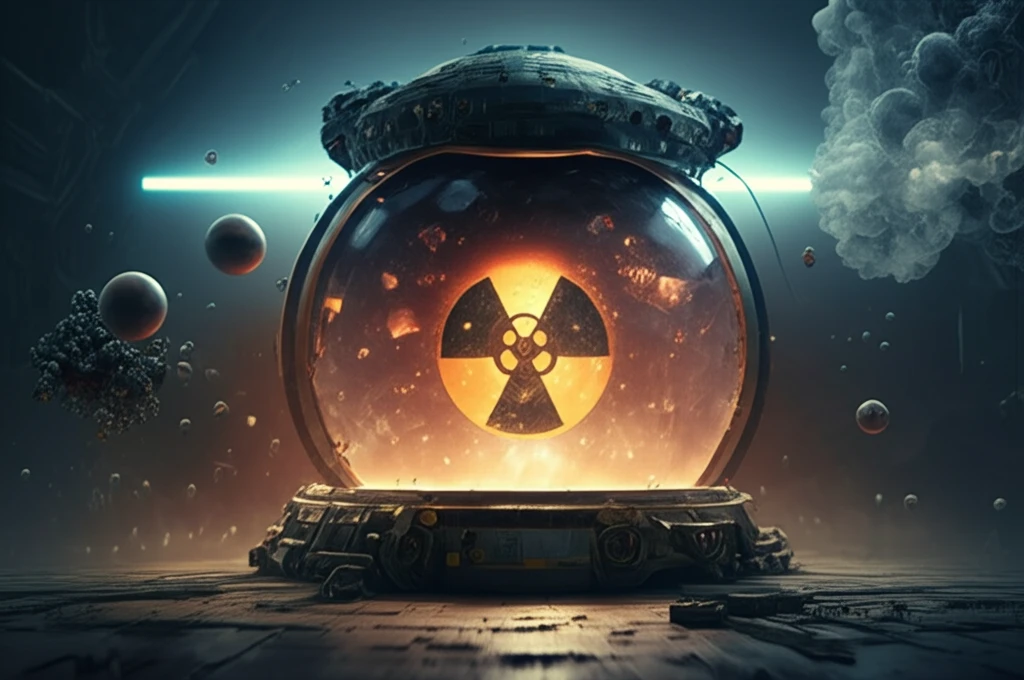
Hidden Risks: Unveiling the Dangers Lurking Inside Nuclear Waste Packages
"Residual Water: A Silent Threat to Nuclear Waste Safety and Long-Term Storage. How seemingly dry contents can create unexpected hazards during storage and transportation."
Managing nuclear waste is a complex and critical task, essential for environmental protection and public safety. Intermediate Level Waste (ILW) packages, designed to contain radioactive materials, often harbor a hidden challenge: residual water. While seemingly innocuous, this water can trigger a series of adverse effects, compromising the integrity of these packages and increasing the risk of accidents during storage and transport.
Residual water in ILW packages isn't always obvious. It can exist as free water, like that found in drained ion-exchange resin, or be chemically bound within materials such as concrete or dried evaporator concentrate. Regardless of its form, water's presence sets the stage for two primary gas-generation processes: vaporization and radiolysis. Understanding these processes is crucial for anticipating and mitigating potential hazards.
This article delves into the complexities of residual water in ILW packages, exploring the mechanisms by which it generates hazardous gases, alters thermal behavior, and affects the chemical composition of the waste. We'll examine the implications of these changes for package design, safety assessments, and long-term storage strategies, offering insights into how these risks can be effectively managed to ensure the safe handling of nuclear waste.
The Dual Threat: Vaporization and Radiolysis

Water transforms into a gaseous phase through two distinct pathways: vaporization and radiolysis. Vaporization occurs when water heats up, changing from a liquid to a gas (steam). This phase transition requires significant energy, and as the steam expands, it increases the internal pressure of the ILW package. The amount of energy depends on multiple factors; temperature, volume, pressure. Steam, on the other hand affects materials of the package and may increase corrosion process.
- Pressure Build-Up: Both vaporization and radiolysis contribute to pressure build-up within the ILW package. Excessive pressure can compromise the package's structural integrity, potentially leading to leaks or even rupture.
- Altered Thermal Behavior: Vaporization and condensation processes change how heat is distributed within the package, affecting its overall thermal behavior, especially during fire scenarios.
- Content Chemistry Changes: Radiolysis alters the chemical composition of the waste, potentially creating unexpected reactions or exacerbating corrosion.
- Flammability Risk: The generation of hydrogen and oxygen creates a flammable atmosphere within the package, increasing the risk of ignition and explosion.
Recommendations for Enhanced Safety
Addressing the risks associated with residual water in ILW packages requires a multi-faceted approach. Thorough drying of waste materials before packaging is ideal, but not always feasible. In cases where residual water is unavoidable, it's crucial to accurately assess the amount present and its potential for gas generation. Package designs must account for the pressure build-up from both vaporization and radiolysis, incorporating features such as pressure relief valves or robust containment structures. Thermal management strategies should also be implemented to mitigate the effects of vaporization and condensation on the package's temperature distribution. Finally, regular monitoring of packages during storage can help detect any signs of pressure build-up or gas leakage, allowing for timely intervention and preventing accidents.
